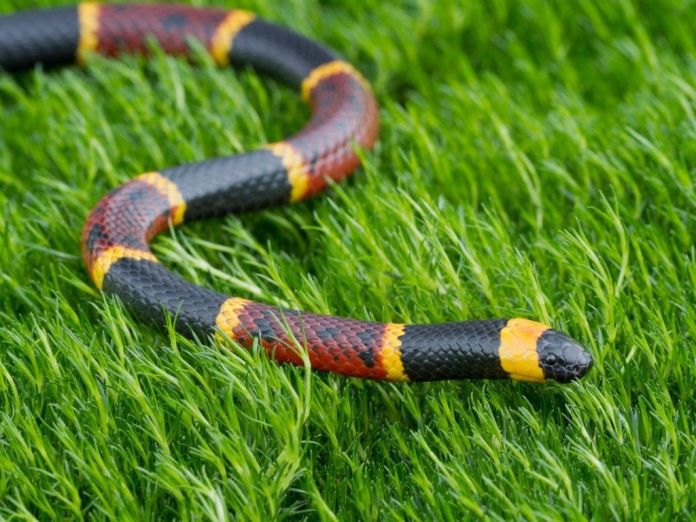By Ali Dunstan
With rich and abundant biodiversity throughout the state, snakes are a great indicator species for the health of our ecosystems. Florida is home to 44 species of snakes, with six of those species being venomous.
The eastern coral snake is one of our most interesting and beautiful venomous snakes. Shy by nature, the eastern coral snake can be a rare sight to see, depending on which part of the state you live in. Brightly colored with red, yellow and black rings, the eastern coral snake is often hard to miss.
If you grew up in the South, a familiar rhyme has likely been passed on to you to identify these elusive creatures: “Red touches yellow, kill a fellow…”
However, this common mnemonic is very misleading. Eastern coral snakes are not vicious killers, rather, they are small, secretive animals that prefer to be hidden and out of sight. Most of their time is spent underground away from clear view of predators or people.
Eastern coral snakes average around 18-30 inches in length and are slender in girth. Females are generally longer in total length while males usually have longer tails.
Eastern coral snakes are diurnal but hunt most actively during the day. Their black-tipped faces are most identifiable by the yellow ring that encircles their heads behind their small eyes. Most commonly found in the dryer, less vegetated habitats of Florida, eastern coral snakes are common in pine and shrubland habitats and they are encountered in preserve areas, typically around leaved and mulched regions.
Eastern coral snakes are notoriously skittish and nonaggressive critters. Their diet is carnivorous, and they survive on lizards, frogs and even other, smaller snakes. Solitary by nature, eastern coral snakes tend to keep to themselves. Their short, fixed front fangs make bites to humans extremely rare as these reptiles require extensive chewing to envenomate their prey. Incidents with eastern coral snakes are almost nonexistent, with over 95 percent of reported bites happening from interference and unnecessary handling of these wild animals.
The main threats to the eastern coral snakes are development, sprawl and overall loss and depletion of habitat. While many have a fear of snakes in general, they are critical to the overall success of our ecosystems and play critical roles in the food web.
Eastern coral snakes should never be harassed, handled or killed. Rather, they can be admired from afar and appreciated for their important role in keeping our habitat healthy, wild and vibrant.



